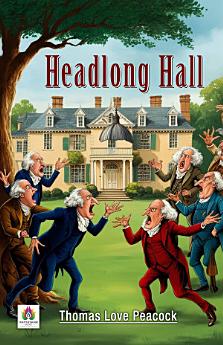Headlong Hall
Acerca de este libro electrónico
The novel's central focus is a series of witty and often absurd dialogues between a host of characters, including philosophers, artists, and academics, who engage in endless debates about subjects such as art, science, religion, and politics. These characters are exaggerated embodiments of various intellectual and philosophical archetypes, providing Peacock with the perfect platform to poke fun at the seriousness with which such topics were often discussed in the early 19th century.
"Headlong Hall" is not just a comedy of manners; it is also a keen social commentary on the pretensions and contradictions of intellectual life in the Regency period. The novel’s playful tone and satirical humor make it a unique contribution to English literature, standing out for its sharp wit and the lighthearted treatment of serious subjects. Peacock uses the setting of Headlong Hall—a charming but rather chaotic estate—as a microcosm for the larger societal conflicts of the time, exploring the clash between reason and imagination, order and chaos.
What makes "Headlong Hall" particularly captivating is its combination of intellectual wit and absurd humor. Peacock’s talent for creating larger-than-life characters and placing them in farcical situations gives the novel an engaging and dynamic pace. His skillful blend of satire, philosophy, and humor ensures that the book remains not only amusing but thought-provoking, inviting readers to reflect on the ideas and ideologies that shape society.
Readers are drawn to "Headlong Hall" for its entertaining dialogue, sharp satire, and the humor with which it exposes the pretensions of intellectual life. This book is a must-read for those who enjoy classic British literature, philosophical satire, and a lively critique of the social and intellectual climate of the early 19th century. With its engaging narrative and thought-provoking commentary, "Headlong Hall" remains an essential work for anyone interested in the interplay between philosophy, society, and humor.








